A Blog from Ernabella
It has been nearly a term since I was last in Ernabella in the beautiful APY lands. I worked with the dedicated teachers again last week, and “Oh Boy!” am I delighted by the way they have built on and extended the work that we did last term.
One of the things we did last visit was to plan an approach to the use of pathway games to consolidate counting on and automaticity with number facts. The approach began with actually creating pathway games in the yard so that students could count the steps as they jumped from one drawn stepping stone to another, counting on as they went.
Actual physical stepping helps some students understand why the count does not include the number that they are on.
Connections, connections, connections
Helga had read “Chicken Licken” to her class and created a story map as she did so. She was preparing the way for her students to create their own settings and story maps and she was delighted with the way her students picked up on it.
The following examples from Helga’s class show how, when students create their own pathway games, they can create games that are contextually and culturally connected to them.
Notice how map-like the games are and how related to the local environment they are. Notice also how connected to personal experience and interest they are.
GAME 1
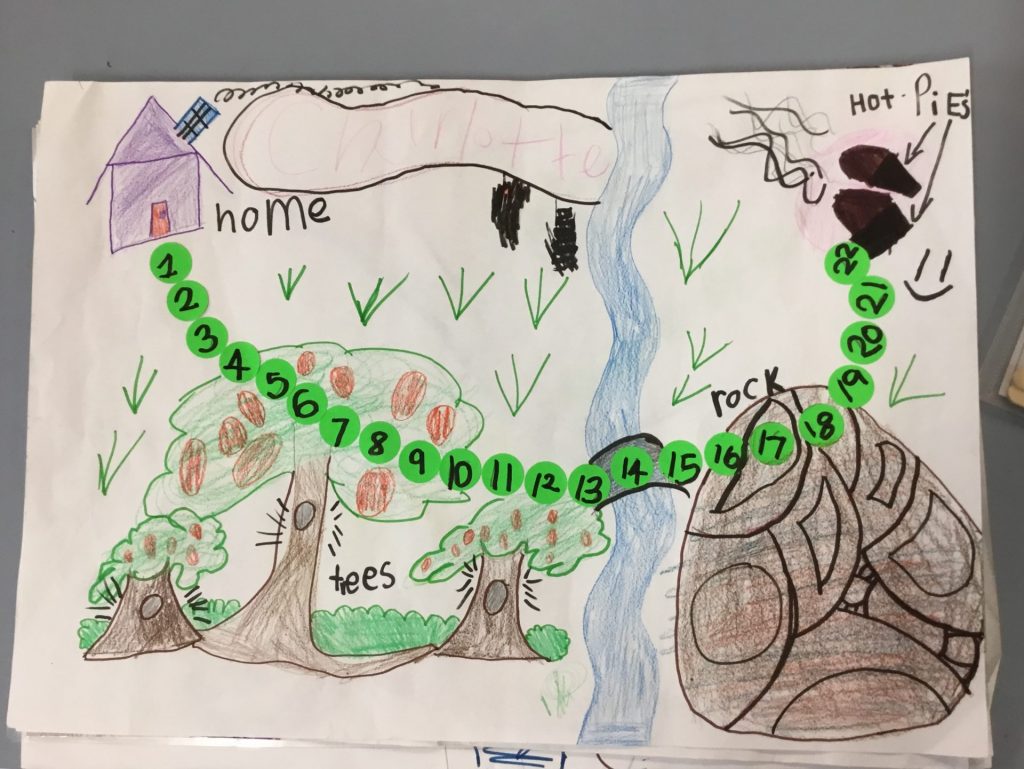
This game starts at home and follows a route to the store for ‘hot pies’. It goes between the trees, over the river, up the hill, down the hill and to the store. Notice also in this example that the spacing in the numbers is proportional and the numbers are sequenced and correctly written – strong connections with the maths curriculum and early number sense.
GAME 2
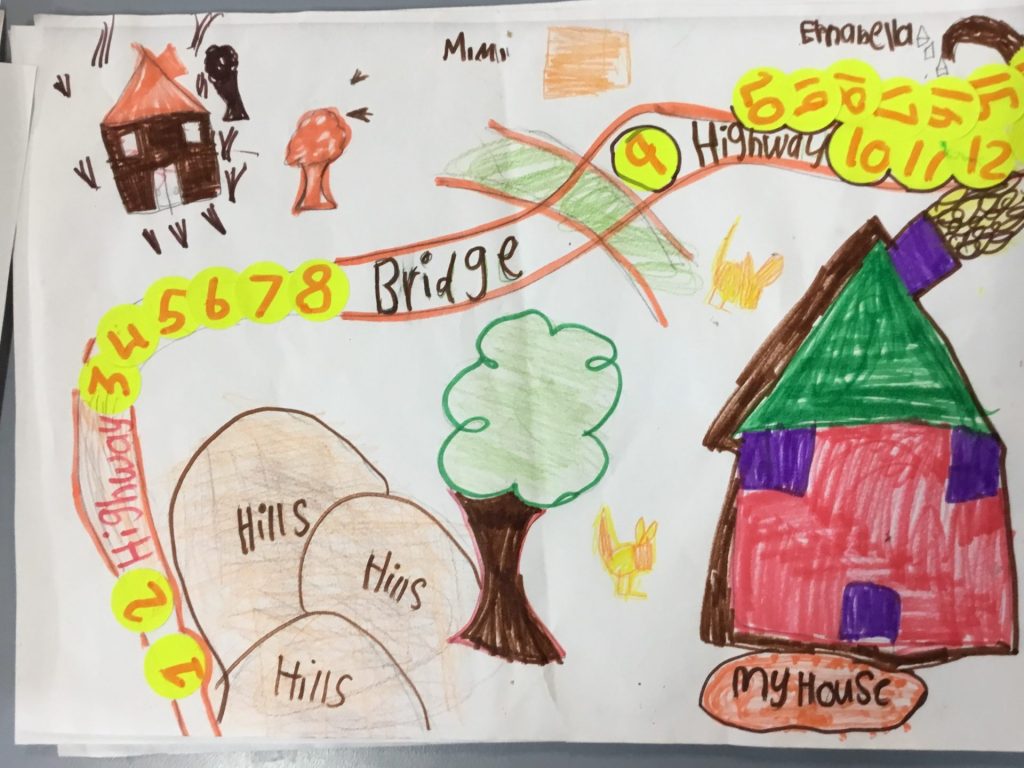
This game is also map like and names local places and the highway between them. Environmental connections here as well as connections to Year 1 Geography. Notice the number sequence to 8, interrupted by the bridge, then the count (which is a breakable chain) is picked up 9, another break followed by 10, 11, … But now proportional spacing is lost and the sequence is squashed to fit it in. Something to follow up on.
GAME 3
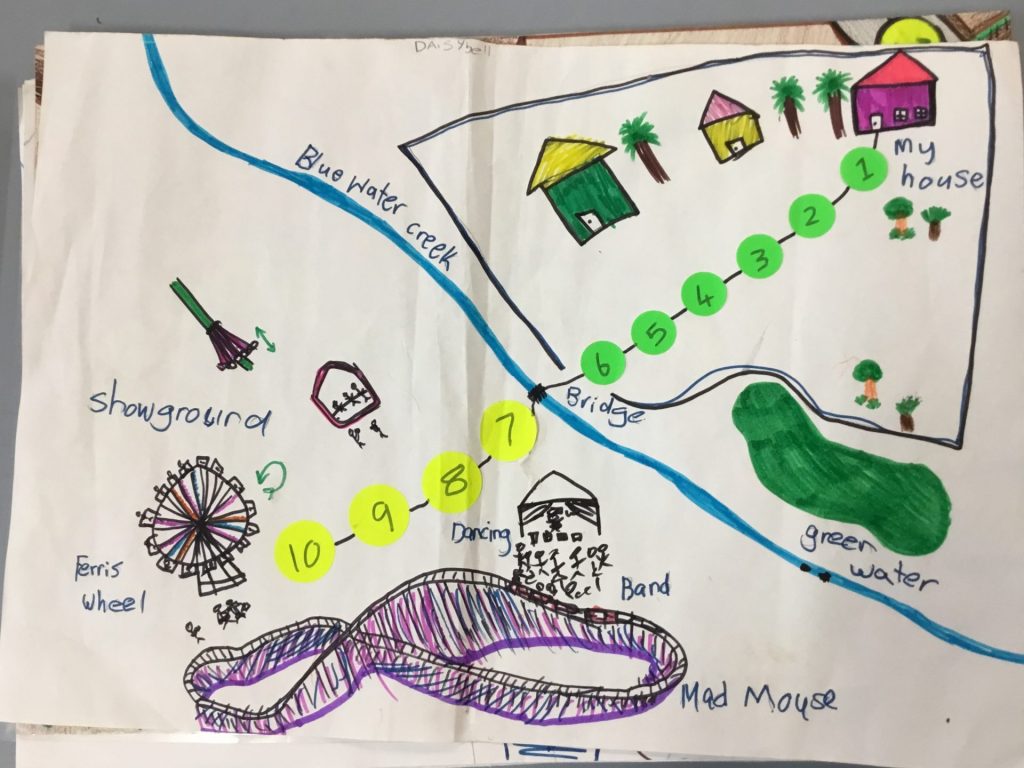
Different connections to the real world this time with reference to the Alice Springs Show. Notice that the count is presented right to left this time and that the ‘stepping stones’ are proportionally spaced.
GAME 4 and 5
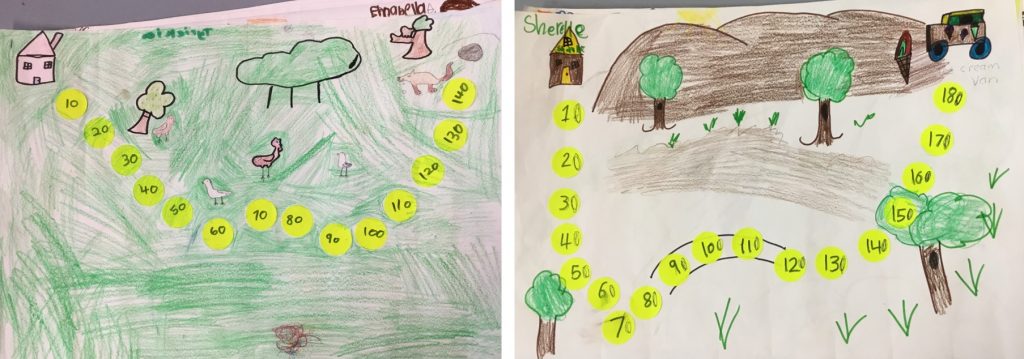
These two examples show how students can bring their own mathematical slant to the task, in this case by using a 10s counting pattern. Notice in the first example that some of the zeroes are in a different pen, the zeroes were added after the number sequence to 18 had been written. What a great scaffold for this student to experiment with counting by 10s.
And…
Last, but by no means least, is the pathway game designed by the Anangu Educator.
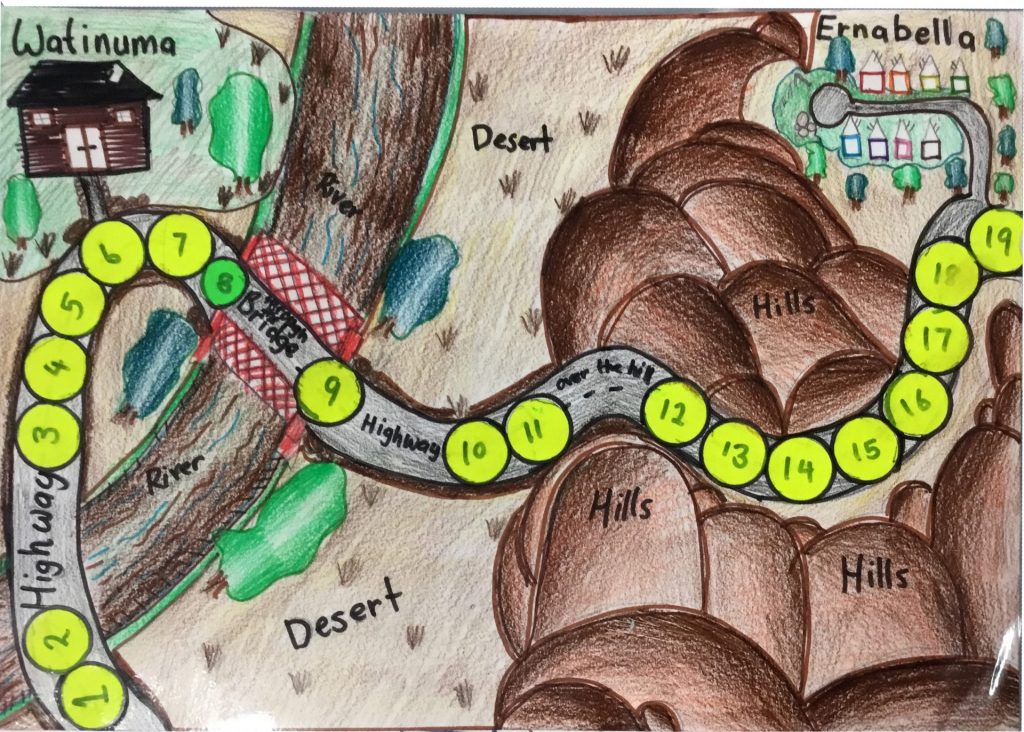
Strong connections now to the whole community.
So what Next?
The games will be laminated, played in class and eventually taken home. Students will develop fluency with number facts or strategies for working them out. Helga is planning on using them as the settings for student story writing.
Don’t you just love all the talented teachers out there? I do.
Want to read about more of our work? Check out the Natural Maths Blog.
